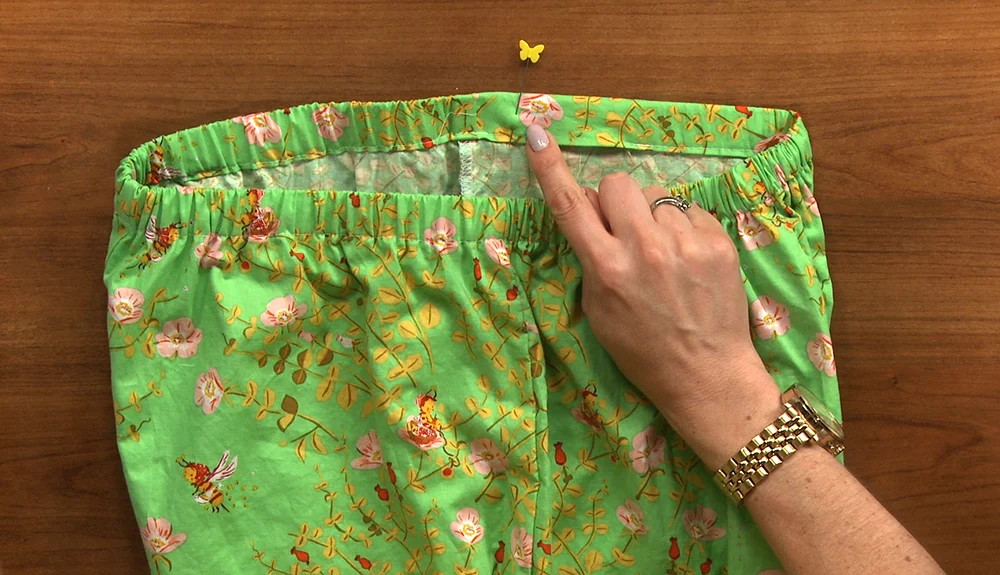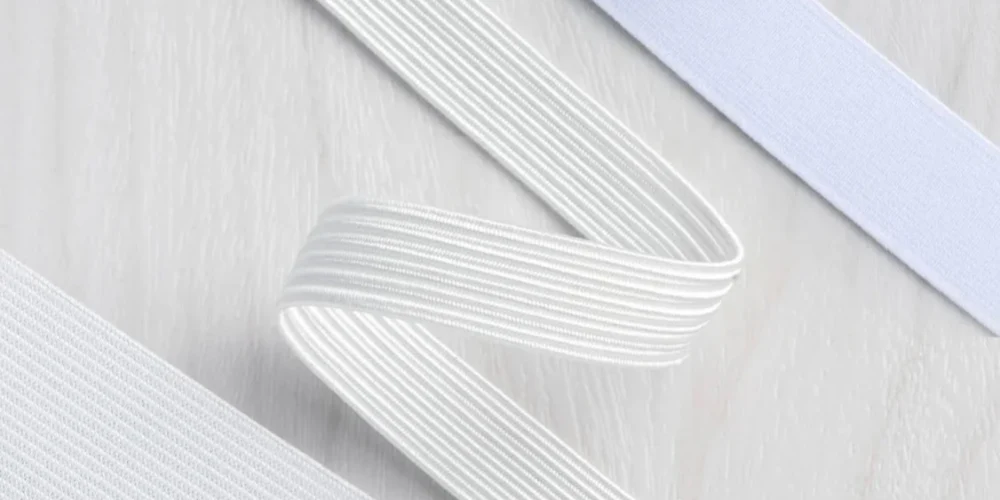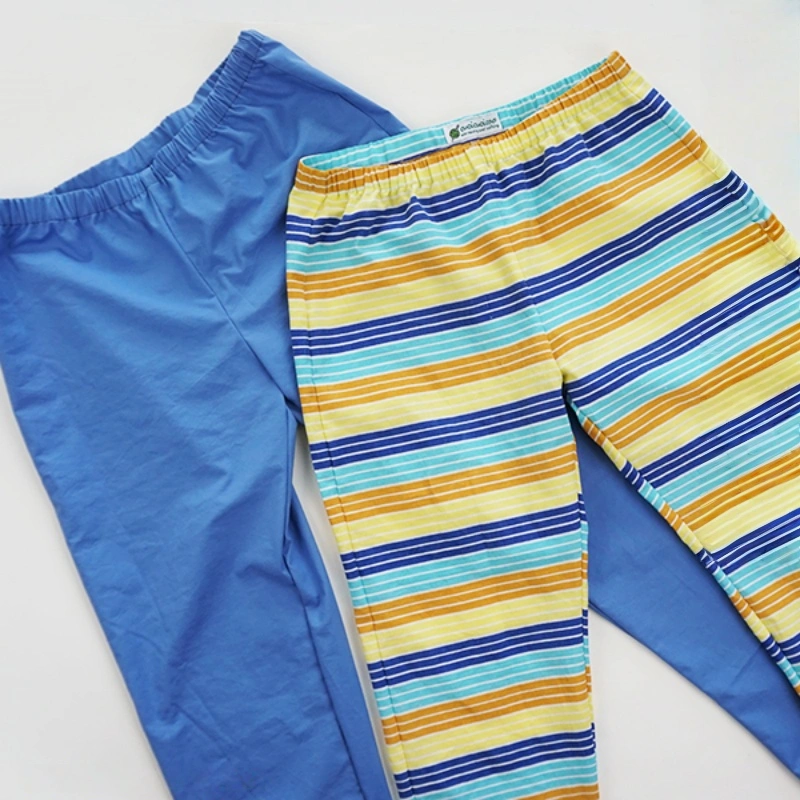When making pajama pants, getting the right fit is key to comfort—and it all starts with measuring your elastic properly. Whether you’re going for a snug or relaxed waistband, the right elastic keeps your sleepwear in place without digging in or slipping. It’s all about finding that perfect balance between comfort and support for a cozy night’s sleep.
To get the best fit, you’ll need to measure your waist carefully and pick the right elastic for your fabric. Don’t worry—it’s easier than it sounds! By following a few simple steps, you’ll end up with an elastic waistband that feels just right. Ready to jump in? Let’s get started!
What is Elastic for Pajama Pants?

Elastic for pajama pants is just a stretchy band that helps keep them comfy and snug around your waist or ankles. You’ll usually find two main types: flat elastic (thin and smooth) and knit elastic (softer and more flexible).
When picking out elastic, think about comfort—make sure it stretches enough to stay in place, but not too tight. To get the best fit, measure your waist or ankle before sewing it in. It’ll make a big difference in how your pajamas feel!
Why Proper Elastic Measurement Matters?
Getting the elastic measurement just right is essential for a comfy fit in your pajama pants. Too tight, and it’ll dig into your skin; too loose, and your pants will slide down. Finding that sweet spot means no uncomfortable pinching and your pants will keep their shape. So, take a little extra time to measure – your cozy comfort will be so worth it!
Tools You’ll Need to Measure Elastic for Pajama Pants
Measuring Tape: A flexible measuring tape is essential for accurate measurements. It curves easily around your waist or ankle, giving you the precise fit you need. No more guesswork here!
Scissors or Fabric Cutter: Once you’ve measured your elastic, you’ll need something sharp to cut it to size. A good pair of scissors or a fabric cutter ensures a clean, even edge, making it easier to sew into your pants.
Pajama Pants or Waist Measurement: If you’ve got a pair of comfy pajama pants that fit just right, use them as a guide. Or, you can measure your waist directly. Either way, having a solid reference point helps get the fit just right.
How to Measure Elastic for Pajama Pants: A Step-by-Step Guide
Step 1: Measure Your Waist Size

Grab a soft fabric measuring tape and measure around the widest part of your waist, usually around your belly button. If you’re making high-waisted pajama pants, go for that higher point instead. Be sure not to pull the tape too tight, and keep it level around your waist to get the most accurate measurement.
Step 2: Determine the Desired Elastic Length
Now that you’ve got your waist measurement, subtract 2 to 4 inches depending on how stretchy your elastic is. More stretchy? Go with 4 inches. Less stretchy? Stick to 2. So, if your waist measures 30 inches, your elastic should be around 26 to 28 inches, depending on how much stretch you want.
Step 3: Stretch Test
Before you cut the elastic, give it a gentle stretch. You want to make sure it’s stretchy enough to hold its place on your body without feeling uncomfortable or digging in. If it feels too tight or doesn’t stretch enough, adjust accordingly.
Step 4: Adjust for Comfort
Wrap elastic around your waist and test how it feels. You should be able to pull it slightly without it feeling too tight or too loose. If it’s not comfortable, don’t hesitate to shorten or lengthen it. Comfort is key!
Step 5: Add Extra Length for Seam Allowance
Add an extra 1 to 2 inches for seam allowance. This will help you secure the elastic properly in the waistband casing. The extra length ensures the elastic will stay in place once everything’s sewn together.
Choosing the Right Elastic for Pajama Pants

Elastic Types Based on Fabric Weight
Knit Elastic: This type of elastic is stretchy and soft, making it perfect for lightweight fabrics like cotton or jersey. If you’re making comfy, cozy pajama pants out of soft cotton, knit elastic will give you the right amount of stretch without being too stiff.
Woven Elastic: If you’re working with heavier fabrics or want a more structured waistband, woven elastic is the way to go. It’s less stretchy but provides a firmer hold, which is great if you want your waistband to stay in place without rolling or bunching up.
Selecting Elastic Width
Narrow Elastic: If you prefer a thinner waistband or are making low-rise pajama pants, narrow elastic works great. It won’t overpower the style of your pants and gives a subtle, comfy fit.
Wide Elastic: For high-waisted pajamas or when you need extra support, wide elastic is your best bet. It holds the waistband in place without digging into your skin. Tip: For most adult pajama pants, a 1-inch width is often just the right balance of comfort and support.
Choosing Elastic Based on Project Needs
White Elastic: If your waistband won’t be visible (think covered by a shirt or tucked in), white elastic is often a good, basic choice. It’s practical and gets the job done.
Fashion Elastic: For a more stylish touch, consider elastic with fun patterns or colors. This can add a bit of personality to your pajamas, especially if the waistband is exposed.
Tip: Make sure the elastic complements your fabric and the overall look you’re going for.
3 Tips for Working with Elastic Fabric
1. Stretch Properly
When you’re working with elastic, make sure to stretch it evenly. Gently pull it so it’s uniform all the way around, especially if you’re attaching it to a waistband. This helps your pajama pants fit just right—no bunching, no uneven tightness. Stretching it evenly ensures the elastic holds its place without feeling too tight or too loose.
2. Avoid Over-Stretching
While you want the elastic snug, don’t over-stretch it. Stretching too much can weaken the fibers, making it lose its bounce-back ability over time. Plus, over-stretched elastic can make your pajama pants uncomfortable, especially after a wash. Stretch just enough to get a good fit, but not too far.
3. Cut Elastic Cleanly
When it’s time to cut your elastic, use sharp scissors or a fabric cutter for clean edges. This prevents fraying and helps you get the perfect length. Clean cuts also make the sewing process easier, so everything stays neat and in place once it’s attached to the waistband.
Common Mistakes to Avoid When Measuring Elastic
Mistake 1: Not Accounting for Seam Allowance
One of the most common mistakes is forgetting to add extra length for the seam allowance when cutting elastic. If you skip this step, your waistband could end up too tight, which can be really uncomfortable. Remember to add 1–2 inches extra to your elastic measurement to ensure that it fits comfortably after you sew it into the waistband. This small step makes a big difference in comfort.
Mistake 2: Using Non-Stretch Elastic
When making pajama pants, using non-stretch elastic is a big no-no. Non-stretch elastic won’t allow your pants to move with you, and it can end up feeling stiff or uncomfortable.
Stretch elastic is essential because it provides that necessary give, ensuring your pajama pants stay in place without digging into your skin. Always make sure you’re using elastic that can stretch, especially for something you’ll be wearing to relax in.
Mistake 3: Incorrect Waist Measurement
A common pitfall is not measuring your waist accurately. If your measurement is off, the elastic could end up too tight or too loose, which can make the waistband uncomfortable or even cause your pants to slide down. To get the best fit, be sure to measure your waist at the widest point and keep the tape measure level around your body. Double-checking the fit before cutting can save you time and frustration later on.
How to Attach the Elastic to Pajama Pants?
1. Attaching Elastic Directly to the Fabric
Attaching elastic to the waistband of your pajama pants is the final step in creating that comfy, snug fit. Whether you’re sewing the elastic directly onto the fabric or feeding it through a waistband casing, the process is pretty simple, and I’ll walk you through it step by step.
1. Attaching Elastic Directly to the Fabric
If you want a no-fuss waistband, sewing the elastic directly onto the fabric is a great option. Here’s how you can do it:
- Placing the raw edge of the elastic on the fabric’s waistband, lining up the edges. Use pins to secure it in place.
- Set your sewing machine to a zig-zag stitch. This will allow the elastic to stretch as you sew, giving it room to move with your body.
- Slowly sew around the waistband, gently pulling the elastic as you go to keep it taut but not overly stretched. Be sure to sew right over the elastic, making sure it’s attached securely to the fabric.
- Once you’ve sewn all the way around, backstitch at the beginning and end to secure the stitching.
2. Feeding Elastic Through a Waistband Casing
- Create your waistband casing by folding the top edge of your pajama pants inward about 1 inch. Pin it in place and sew along the bottom edge to form a tube.
- Use a safety pin to attach the end of the elastic and feed it through the waistband casing. It can be a bit tricky, but just keep pulling the safety pin through until the elastic is all the way around.
- Once the elastic is in place, overlap the ends of the elastic by about an inch, then sew them together securely.
- Close up the waistband casing by stitching along the top edge, making sure to catch the elastic inside.
3. Elastic Sewing Tips
When sewing elastic, there are a few things to keep in mind to ensure the best fit:
- Even Stretching: Make sure the elastic is stretched evenly as you sew. If it’s uneven, you may end up with areas that feel tighter or looser than others. Stretch the elastic gently as you go to keep things consistent.
- Don’t Stretch Too Much: While you want the elastic to fit snugly, don’t pull it too hard while sewing. Over-stretching can make the waistband uncomfortable, and it could also damage the elastic.
- Check for Comfort: Before you finish, try on your pajama pants to check if the waistband feels comfortable. You should be able to move easily without the elastic digging in or feeling too loose.
Final Tips for Ensuring a Perfect Fit
Getting the fit perfect means you’ll feel comfy and relaxed in your new creation. Here are a few final tips to help you ensure your waistband fits exactly how you want it:
1. Testing the Fit
The best way to check the fit is by simply trying on your pajama pants. Once the elastic is attached, put on the pants and pay attention to how the waistband feels. Is it snug enough to stay up but not too tight to be uncomfortable? If it feels good, you’re on the right track!
Move around a bit—sit, stand, and stretch—just to make sure the waistband stays in place and doesn’t pinch. This is your chance to catch any fit issues early, so you can make small tweaks before finishing the pants.
2. Adjustments After Fitting
If the waistband feels a little too tight or loose after you try on the pants, don’t worry! It’s easy to make adjustments. If it’s too tight, you can unpick the stitching and add a bit more slack to the elastic.
If it’s too loose, try tightening it by removing some of the excess elastic or sewing a small tuck in the waistband to pull it in. Keep testing as you go to ensure the waistband fits comfortably without digging in or slipping down. Remember, the key is making the waistband fit comfortably for all-day lounging!
Conclusion
Properly measuring elastic is the key to creating the perfect-fitting pajama pants. Whether you’re aiming for a snug or more relaxed waistband, getting your elastic measurements right ensures comfort all night long. Don’t forget to account for seam allowance, stretch, and how the elastic interacts with your fabric to get the best fit.
Experiment with different types of elastic and techniques to customize your sleepwear. There’s no one-size-fits-all approach, so feel free to try out a variety of options until you find what works best for you. Ready to make your own pajama pants? Try out new elastic options, and for the highest quality, check out Friendtex Pajama Pants—they’re a great choice for a comfy and stylish fit!
FAQ
How to Get Blood Out of Pajama Pants?
Act Quickly: The faster you deal with the stain, the better. Gently blot the stain with a clean cloth to soak up any excess blood.
Soak in Cold Water: Fill a basin with cold water and soak the stained part for 10-15 minutes. Cold water stops the blood from setting into the fabric.
Apply Soap or Stain Remover: Put a bit of liquid soap or a stain remover directly on the stain, and gently rub it in.
Rinse with Cold Water: After scrubbing, rinse the fabric under cold running water to flush out the stain.
Repeat if Needed: If the stain’s still there, repeat the process or use hydrogen peroxide for tougher stains, but always test it on a hidden spot first.
How to Stretch Out Pajama Pants?
Wet the Fabric: Dampen your pajama pants with lukewarm water. You can spray it on or briefly soak the fabric.
Gently Stretch the Fabric: Lay your pants flat and gently pull at the waistband and legs, focusing on any tight spots.
Use a Fabric Softener Solution: Mix some water with fabric softener, then spray it on the tight areas. It helps loosen the fibers.
Let Them Air Dry: Let your pants air dry while they’re stretched out. Repeat if they need a little more stretching.
How to Shrink Pajama Pants?
Soak in Hot Water: Fill a basin with hot water and let your pajama pants soak for 15-20 minutes. The heat causes the fabric to shrink.
Wash in Hot Water: After soaking, wash your pants in the machine on the hottest setting.
Dry on High Heat: Toss your pants in the dryer on high heat for 30-40 minutes, but keep an eye on them to avoid over-shrinking.
Check the Fit: After drying, try them on. If they’re not shrunk enough, repeat the process until you get the fit you want.
How to Style Pajama Pants?
Pair with a T-shirt: Keep it simple and comfy with a fitted T-shirt.
Add a Hoodie or Sweatshirt: Layer a cozy hoodie or sweatshirt for a laid-back look.
Dress Up with a Button-up Shirt: For a stylish twist, tuck a button-up shirt into your pajama pants.
Wear with Flats or Sneakers: Slip into flats or sneakers to finish off the comfy-chic look.
Accessorize: Add a scarf or a hat to make the outfit your own.


